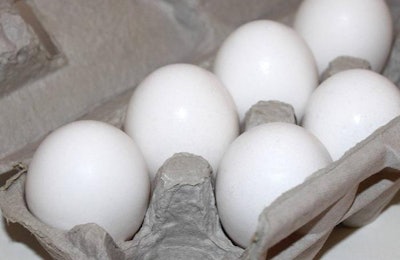
Cal-Maine Foods reported a net income of $21.8 million for the second quarter of fiscal year 2019, compared to a loss of $26.1 million for the second quarter of fiscal year 2018.
Results for the second quarters of fiscal 2019 and 2018 include charges for certain legal settlements of $1.7 million and $52.8 million, after tax, respectively. Excluding these items, net income was $23.7 million and $26.6 million, respectively.
For the same period, the world’s largest egg company reported net sales of $356 million, which was a 1.4 percent decrease from its net sales during the second quarter of fiscal year 2018. The company on January 4 released its quarterly financial information for the period ending December 1, 2018.
Dolph Baker, chairman and chief executive officer of Cal-Maine Foods, Inc., stated, “Cal-Maine Foods had solid financial and operating performance for the second quarter of fiscal 2019 amidst less favorable market conditions than the same time last year. Our sales for the second quarter were down 1.4 percent, reflecting a modest decline in volumes and lower average customer selling prices for conventional eggs compared with a year ago.
“While we experienced volatility in market prices during the quarter, our overall average customer selling price for shell eggs was down only 0.8 percent, compared with the second quarter of fiscal 2018. Per capita egg consumption is up near historical levels, but supply concerns appear to be affecting market prices. According to the USDA, the hatch is up 10 percent year to date, but the actual hen inventory is up only 2.8 percent. Hen numbers are forecasted to continue trending upwards for the next several months, which may continue to affect market prices into 2019. …
“Our operations ran well through the fall. Our farm production costs per dozen were up 5.5 percent, primarily related to increased feed costs. For the second quarter of fiscal 2019, overall production was relatively flat compared with a year ago. Our feed costs per dozen increased 7.0 percent, due to the higher cost of feed ingredients, primarily related to less favorable crop conditions in the south central United States, which adversely affected ingredient prices at some of our larger feed mill operations,” Baker said.
Specialty egg trends
Baker reported that the company is pleased with the trends in its specialty egg business, as total dozens sold of specialty eggs during the quarter, excluding co-pack sales, were up 3.7 percent over the same period last year.
“Specialty eggs continue to be popular with consumers who are willing to pay higher prices compared with conventional eggs. Specialty egg prices were up 2.9 percent in the second quarter of fiscal 2019, compared with the same period a year ago. Specialty egg revenue was 35.0 percent of our total shell egg revenue, compared with 32.3 percent for the second quarter of fiscal 2018,” he said.
As demand trends change, Cal-Maine Foods will continue to provide its customers with a favorable product mix of healthy and affordable options including conventional, cage-free, nutritionally enhanced and organic eggs, Baker added.
“We continue to invest in our operations to improve overall efficiency and to prepare for the expected continued increase in demand for specialty eggs, especially cage-free eggs,” he said. “We are near completion of several major capital projects at Cal-Maine Foods’ facilities and will continue to strategically expand our production capacity.”
Impact of California Proposition 12
With the recent passage of California’s Proposition 12 ballot measure in California, which mandates that all eggs or egg products sold in California must be cage-free by 2022, Cal-Maine Foods is closely monitoring related industry development.
“While this referendum will clearly affect sourcing and production of eggs in California, we also expect it to affect future supply and pricing in other areas of the country. With our strong balance sheet and proven management systems, Cal-Maine Foods is well positioned to capitalize on this opportunity to expand our operations or consider potential acquisitions,” said Baker.
















